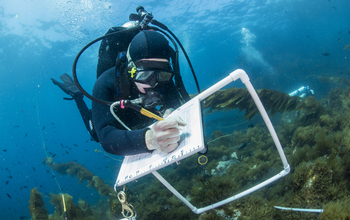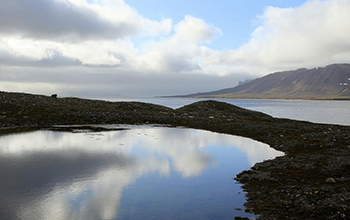
Research News
Prototype has been tested off Egmont Key, Florida; potential uses could span the globe
December 2, 2019
With funding from NSF, geoscientists at the University of South Florida have successfully developed and tested a new high-tech shallow water buoy that can detect the small movements and changes in the Earth’s seafloor that may be precursors to deadly natural hazards, such as earthquakes, volcanoes and tsunamis.
The buoy, created with the assistance of a grant from NSF’s Ocean Technology and Interdisciplinary Coordination program, was installed off Egmont Key in the Gulf of Mexico and has been producing data on the three-dimensional motion of the sea floor. Ultimately the system will be able to detect small changes in the stress and strain of the Earth’s crust, said Tim Dixon, a marine scientist at the university.
The seafloor system is an anchored spar buoy topped by a high precision Global Positioning System. The buoy’s orientation is measured using a digital compass that provides heading, pitch, and roll information –- helping to capture the crucial side-to-side motion of the Earth that can be diagnostic of major tsunami-producing earthquakes.
Knowledge of offshore strain accumulation and release processes is critical to understanding shallow-water earthquakes and tsunamis. The findings were published in the Journal of Geophysical Research-Solid Earth.
The research is funded by NSF’s Division of Ocean Sciences.
—
NSF Public Affairs,
(703) 292-7090 media@nsf.gov








